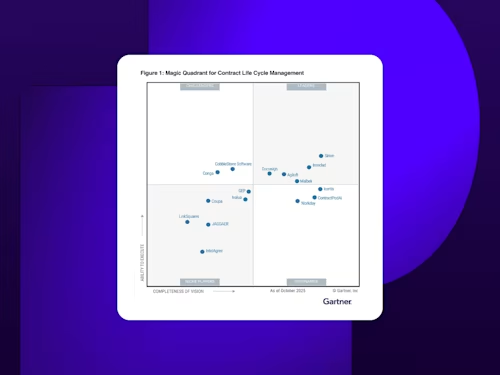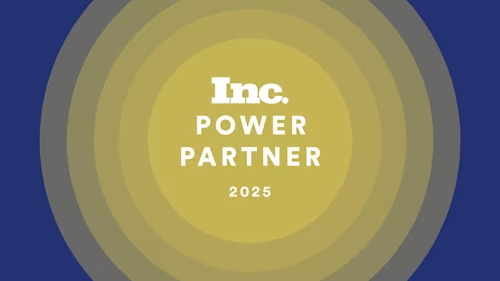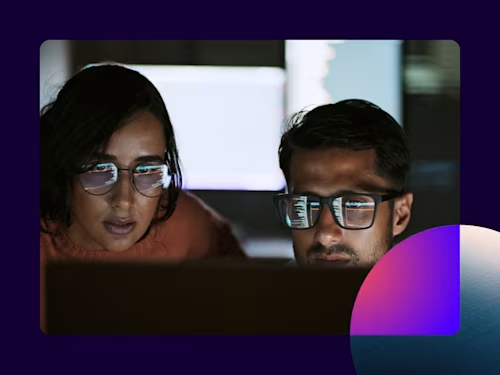
Q&A: A Government Expert’s Perspective on Reducing Waste and Fraud in Federal Agencies
John Casey leans on his extensive government experience to offer insights about how technology can help federal agencies reduce waste and fraud by streamlining processes within their existing systems.

With the current administration focusing on stopping waste, fraud, and abuse in the federal government, there are innovative ways to meet these goals using technology that streamlines processes and improves transparency.
In the following Q&A interview, we speak with John Casey, Federal Account Executive at Docusign, about his firsthand experience in federal agencies like the U.S. Office of Personnel Management (OPM) and the Department of Defense (DoD).
From overseeing financial controls to driving program success, Casey provides his perspective on the questions he frequently hears about reducing waste and fraud in government finance.
The following has been edited for length and clarity.
Tell us a bit about your background in government and your path to the private sector.
I began my career with an internship at the U.S. OPM during a semester in DC while studying at Indiana University. That turned into a full-time role, and I spent several years in government. One of my first projects was supporting a George W. Bush E-Government initiative that evolved into USAJOBS.
I later moved into program management, overseeing finance and budgeting for a fee-for-service entity. I also led internal controls—validating receipts, enforcing separation of duties, and managing purchase card usage across the organization to help prevent fraud, waste, and abuse.
Eventually, I took that experience into the private sector, joining consulting and technology firms that work closely with the government. Over the past several years, I’ve had a front-row seat to see how agencies tackle complex challenges from the outside in. I've been fortunate to spend over 15 years serving public sector organizations, and that perspective continues to shape how I think about what's possible when the right people and tools come together.
How did technology help facilitate financial oversight during your time at OPM?
Reflecting on my time at OPM, technology was heavily leveraged, however, it was very much a “swivel chair” experience of juggling multiple legacy systems that didn't talk to each other. Budgeting, procurement, and HR all required entering the same data on different platforms, and a lot of the processes were still paper-based.
Technology was more about data entry and extraction. To do any meaningful analysis, we had to manually massage the data, which was incredibly time-consuming. The systems didn't provide insights, and you actually had to dig for them yourself.
We relied on manual controls and cross-checks. We had processes in place, but they were manually executed and dependent on people knowing what to look for.
People with long tenures could spot patterns or inconsistencies, but for newer employees, it was difficult to connect the dots. There was no automation or intelligence built into the system to help surface risks or anomalies.
You mentioned you had processes in place to help prevent fraud and waste. Can you share more?
We focused heavily on internal controls like separation of duties and layered approvals. For example, one person would create a vendor profile, another would review it, and then a different team would handle the invoice, confirming services were rendered before processing payment.
Receipts were reviewed manually, everything required a paper trail, and disputes—what we called "charge-backs"—could be time-consuming and costly. We’d work in sequential order from spreadsheets, one at a time vs. looking at invoices by vendor. The processes were effective, but again, very manual. It worked, but it wasn't scalable or efficient, and it made training new staff challenging.
What do you see as the biggest challenges agencies face today in preventing waste and fraud in budget management?
One of the biggest challenges I experienced, and continue to hear about from federal colleagues, is the inability to sift through large volumes of data to identify risk. We'd do random sampling when auditors came in, but there was no system helping us prioritize which transactions might be problematic. Technology like AI could've helped flag patterns or anomalies for further review, but we didn't have access to that kind of capability. Instead, we relied on manual processes and institutional knowledge, which, while valuable, left room for oversight gaps and inefficiencies.
That lack of intelligent tools not only slowed things down but also increased the risk of missing something important. And because many agencies are working with complex, legacy systems, there's a natural hesitation to make major changes. But modernization doesn’t have to mean disruption—it can be incremental, strategic, and aligned with existing workflows.
How can agencies look to modernize without disrupting legacy systems?
You don't have to rip and replace what you already have. Most agencies have already invested significant resources in platforms like Salesforce, ServiceNow, SAP, Appian, and Microsoft. The key is to enhance and streamline existing systems, without disrupting the whole organization. I believe work should feel as convenient as everyday life. You can order dinner, request a ride, or buy a home from your phone—signing documents at work should be just as easy.
In nearly every customer meeting I join, someone says, “I just used Docusign last week.” That kind of familiarity is a great starting point—but it’s also where our work begins. The signature is just the beginning. What really sets Docusign apart is everything that comes before and after, like integrations, workflows, and automation. We meet agencies where they are, within their existing technology ecosystem, and bring low-code/no-code solutions that adapt to their workflows. We're not adding complexity. We’re helping teams simplify, streamline, and get more from the tools they already trust.
How do you see AI and automation transforming this space?
I alluded to this earlier, but AI has the potential to reduce the burden of mundane tasks and surface actionable insights. The idea is to free up staff from manual data entry and let them focus on strategic decisions.
AI tools can help identify unusual patterns, flag potential risks, and even assist in retraining themselves over time. The key is having technology do the heavy lifting with data, so people can apply their expertise where it really matters.
Looking back on your experience, what perspective would you offer to agencies trying to make real progress in reducing waste and strengthening oversight?
I know these challenges can feel daunting, especially when agencies are working with limited resources, legacy systems, and constantly shifting priorities. But I’ve seen firsthand that progress is possible. Whether it’s through smarter use of data, better collaboration across teams, or embracing tools like AI, there are real opportunities to strengthen oversight and be a good steward of taxpayer dollars.
A big part of making progress is starting with the basics: digitizing forms and manual processes, creating more visibility into how agreements move through an agency, and reducing the risk that comes with paper-heavy workflows. These kinds of changes might seem small, but they can dramatically reduce waste, speed up decision-making, and improve accountability.
The agencies making the most progress aren’t necessarily doing it all at once—they’re finding ways to work smarter within the systems they already have. That might mean connecting the tools they use every day or using automation to cut down on repetitive tasks. The goal isn’t perfection—it’s progress. And often, it starts with just one high-impact use case that demonstrates what's possible.
I hope this perspective helps anyone who’s thinking about how to make those next steps in their own agency.
Looking to mitigate waste and fraud within your agency? Contact us today to get started.
Related posts
Docusign IAM is the agreement platform your business needs




